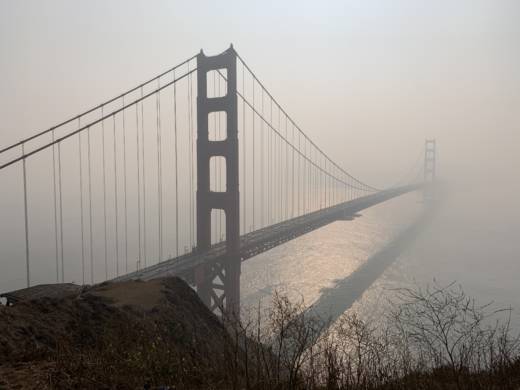Hotter temperatures, devastating wildfires and more traffic were some of the factors that worsened Bay Area air quality from 2015 to 2017, according to the American Lung Association’s annual State of the Air report.
For the first time in the report’s 20-year history, no Bay Area counties received an “A” grade for daily particle pollution, a measure of how much harmful exhaust, dust and ash are in the air. The Bay Area as a whole, in fact, was ranked in the 10 worst U.S. metropolitan areas for ozone, short-term particle and annual particle pollution.
Alameda, Contra Costa, Marin, Napa and Santa Clara counties all earned Fs in the day-to-day particulate pollution category. Over the three-year period, those counties each experienced more than nine unhealthy air days. San Francisco and San Mateo counties weren’t far off, earning a D, defined as one week or more of unhealthy air conditions.
Sonoma County, frequently a straight-A area, fell to a C for particle pollution in the current report. Increasingly destructive wildfires such as the Tubbs, Valley and Nuns fires had a major impact on the county’s air quality, as well as on the air all over the Bay Area, the ALA said.
Experts who weighed in on the report suspect another reason for the worsening air might be more “super-commuters” — drivers with long commutes, who spend more time on the road to get to and from work.

